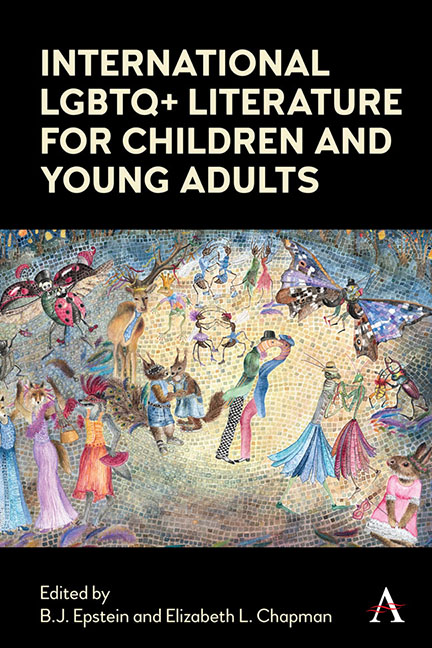Book contents
- Frontmatter
- Dedication
- Contents
- List of Illustrations
- Acknowledgements
- Notes on contributors
- Introduction
- BRAZIL
- FRANCE
- GERMANY/ AUSTRIA
- GREENLAND
- INDIA
- INDIGENOUS WRITING
- ITALY
- MULTINATIONAL
- MULTINATIONAL
- MULTINATIONAL
- THE PHILIPPINES
- SLOVENIA
- SOUTH KOREA
- SPAIN
- SWEDEN
- SWEDEN
- List of Primary Texts
- Index
Chapter Ten - Sameness and Difference in Visual Representations of Same-Sex Couples in International Children’s Picture Books
Published online by Cambridge University Press: 18 November 2021
- Frontmatter
- Dedication
- Contents
- List of Illustrations
- Acknowledgements
- Notes on contributors
- Introduction
- BRAZIL
- FRANCE
- GERMANY/ AUSTRIA
- GREENLAND
- INDIA
- INDIGENOUS WRITING
- ITALY
- MULTINATIONAL
- MULTINATIONAL
- MULTINATIONAL
- THE PHILIPPINES
- SLOVENIA
- SOUTH KOREA
- SPAIN
- SWEDEN
- SWEDEN
- List of Primary Texts
- Index
Summary
Introduction
Research indicates that it is important for all children to see representations of themselves and their families, as well as others from diverse cultures, in the books they encounter to better understand their sociocultural world and function successfully within a culturally pluralistic society (Botelho and Rudman 2009; Johnson et al. 2017). One way this occurs is through the illustrations in children's picture books. International picture books hold great potential to cross borders and reinforce the universality of experiences. Activist, scholar and librarian Jella Lepman (1969) advocated that international children's books could build bridges of understanding and break down psychosocial barriers created by larger politicized environments.
Unfortunately, children's literature around the globe has the propensity to highlight certain cultural groups over others, often depicting families and characters as heterosexual, ignoring lesbian, gay, bisexual, trans and queer (LGBTQ+) families and children. Within the growing body of queer-themed children's picture books, some titles are more successful than others at conveying a loving relationship between LGBTQ+ individuals and creating a safe space to explore queer themes (Epstein 2013; Naidoo 2012; Sunderland and McGlashan 2012).
Using semiotics and visual content analyses, this chapter critically examines illustrations within a selection of foreign-language children's picture books with queer themes to determine how LGBTQ+ families and characters are visually represented. Specifically, we focus on how same-sex couples (male-male or female-female) are illustrated and note any discernible differences or similarities across books from different countries. We also examine the overarching messages that children receive from the images in these books. The study provides insight into how books from specific countries depict physical contact between same-sex individuals and couples. While our sample of titles provides an opportunity to comparatively examine queer international children's books, it should be expressly understood that the low number of books prevents the study from being statistically generalizable to the larger body of this literature.
Previous Research
In 2011 and later in 2012, Jane Sunderland and Mark McGlashan published one of the first research studies in English critically examining how same-sex mums and same-sex dads were represented in the illustrations of English-language children's picture books.
- Type
- Chapter
- Information
- International LGBTQ+ Literature for Children and Young Adults , pp. 183 - 198Publisher: Anthem PressPrint publication year: 2021

